Incidence and Demographic Profile of Ewings Sarcoma: Experience From a Tertiary Care Hospital
- PMID: 34722090
- PMCID: PMC8551935
- DOI: 10.7759/cureus.18339
Incidence and Demographic Profile of Ewings Sarcoma: Experience From a Tertiary Care Hospital
Abstract
Introduction Ewing sarcoma (ES) family of tumors (EFT) represents the second most common primary bone malignancy affecting children and adolescents after osteosarcoma. The tumor is characteristically associated with a chromosomal translocation resulting in a fusion transcript (EWSR1-FLI1). However, new molecular techniques have significantly transformed our understanding of this rare disease. The present study aims to analyze the incidence and demographic profile of Ewings sarcoma with an insight into the recent updates of the Ewing sarcoma (ES) family of tumors (EFT). Materials and methods All cases of Ewings sarcoma/peripheral neuroectodermal tumor (PNET) presented at a tertiary care center in South India from January 2010-December 2020 were included in this study. The demographic profile and patient details were obtained from the medical records section. Pathology reports of the included cases were retrieved, and associated factors were analyzed, including immunohistochemical studies and molecular workup. Results Out of the 58 cases included in the study, 30 cases (52%) were children and adolescents (< 20 years) and the rest 28 cases (48%) were adults. The mean age was 22.56. Female preponderance was noted, with 32 cases (56%) being females and 26 cases (44%) were males. The location of the tumor was variable. Twenty-five (25) cases (44%) were found in bones such as the clavicle, tibia, and mandible. Seven cases were seen on the anterior chest wall. Other sites included the oropharynx, lungs, endobronchial, infrascapular region, retroperitoneum, and thighs. One case presented as metastatic Ewings sarcoma with divergent differentiation in lungs with the primary site of the tumor being the right humerus. Immunohistochemical (IHC) studies were done on 55 of the 58 tumors. Forty-six (46) cases (80.9%) were CD99 positive and 41 cases(71.4%) were FLI-1 positive. Eleven (11) cases were both CD 99 and FLI-1 positive. NKX2.2, a recent IHC marker, was positive in six cases. Conclusion Ewings sarcoma has a peak incidence in the second decade of life with a propensity toward the axial skeletal location. Understanding the pathobiology and molecular updates of ES is significant to differentiate them from aggressive round cell sarcomas. They not only aid in predicting the prognosis of these aggressive tumors but also guide in therapy.
Keywords: chromosomal translocation; ewsr1-fli1; immunohistochemistry; pathobiology; theragnosis.
Copyright © 2021, Muralidhar et al.
Conflict of interest statement
The authors have declared that no competing interests exist.
Figures


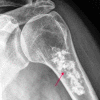
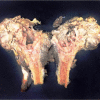
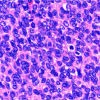
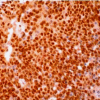
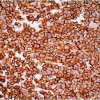
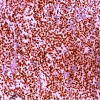
References
-
- The neuroectodermal tumor of bone. Jaffe R, Santamaria M, Yunis EJ, Tannery NH, Agostini RM Jr, Medina J, Goodman M. Am J Surg Pathol. 1984;8:885–898. - PubMed
-
- Extraskeletal neoplasm resembling Ewing's sarcoma. Angervall L, Enzinger FM. Cancer. 1975;36:240–251. - PubMed
-
- Bone tumours in European children and adolescents, 1978-1997. Report from the Automated Childhood Cancer Information System project. Stiller CA, Bielack SS, Jundt G, Steliarova-Foucher E. Eur J Cancer. 2006;42:2124–2135. - PubMed
-
- Cloning and characterization of the Ewing's sarcoma and peripheral neuroepithelioma t(11;22) translocation breakpoints. Zucman J, Delattre O, Desmaze C, et al. Genes Chromosomes Cancer. 1992;5:271–277. - PubMed
-
- MIC2 is a specific marker for Ewing's sarcoma and peripheral primitive neuroectodermal tumors. Evidence for a common histogenesis of Ewing's sarcoma and peripheral primitive neuroectodermal tumors from MIC2 expression and specific chromosome aberration. Ambros IM, Ambros PF, Strehl S, Kovar H, Gadner H, Salzer-Kuntschik M. Cancer. 1991;61(7):1886–1893. - PubMed
LinkOut - more resources
Full Text Sources
